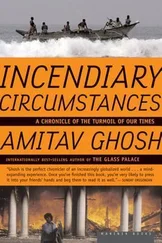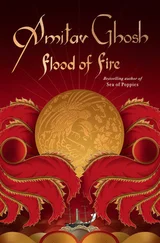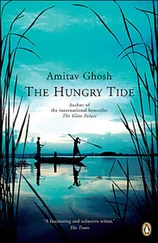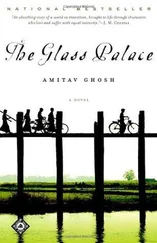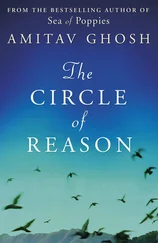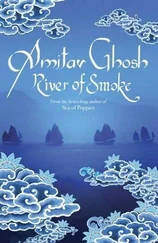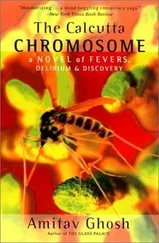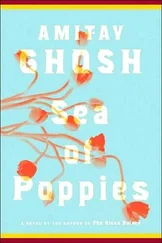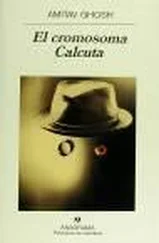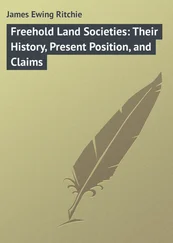Ben Yiju, for his part, seems to have reposed a great deal of Crust in Bomma from the very beginning of their association. When Bomma went to Aden in 1135, for example, he was responsible not only for delivering a quantity of merchandise, but also for bringing back a large shipment of goods for Ben Yiju and his household. Among the items he brought back were four  a
a  îra-s or mats from Berbera (in modern Somaliland), a leather table cloth of a special kind on which chess and other games could be played, an iron frying-pan, a sieve, a large quantity of soap, two Egyptian gowns, and several presents from Madmun, such as sugar, raisins, ‘a quire of white paper’, as well as a piece of coral for Ben Yiju’s son, Surur.
îra-s or mats from Berbera (in modern Somaliland), a leather table cloth of a special kind on which chess and other games could be played, an iron frying-pan, a sieve, a large quantity of soap, two Egyptian gowns, and several presents from Madmun, such as sugar, raisins, ‘a quire of white paper’, as well as a piece of coral for Ben Yiju’s son, Surur.
The two ‘gowns’ that Bomma brought back with him were almost certainly intended for Ben Yiju himself, because it is clear from other references in his correspondence that he, like his fellow expatriates, continued to wear the customary garments of the Middle East — robes, turbans and the like — all the while that he was in India. The people of Malabar, on the other hand, generally left the upper parts of their bodies bare, men and women alike — their preferred markers of class distinction being ornaments and jewellery rather than articles of clothing. ‘They wear only bandages around the middle,’ wrote ‘Abd al-Razzaq al-Samarqandi, ‘[garments] called lankoutah, which descend from the navel to above the knee.’
To Middle Eastern merchants like Ben Yiju, on the other hand, being properly dressed meant wearing a double layer of clothing, first a loose undergarment and over that a robe, a garment that covered the covering, so to speak, of the body’s nakedness and rendered it fit to be seen in public: anything less they would have considered immodest.
Ben Yiju, for one, was clearly fastidious about his clothing. Several of his letters and accounts mention imported Egyptian robes and fine Alexandrian cloaks, while others refer to lengths of cloth and kerchiefs that may have served as turbans. He clearly had a reputation as a careful dresser amongst his friends; Madmun, for instance, when sending him a shawl once, thought it prudent to extol its qualities: ‘I have also for my own part, sent for you … a fine new Dîbîqî shawl, with nicely worked borders — an appropriate garment for men of eminence.’
The most important of his imports, as far as Ben Yiju was concerned, was paper. In the Malabar, as in most parts of India, the material most commonly used for writing at that time was the palm-leaf — paper appears to have been rare and difficult to obtain. In the Middle East, on the other hand, paper was being produced on a large scale by the eleventh century, and like most of his contemporaries Ben Yiju must have grown accustomed to it in his youth. Once he moved to India his friends went to great pains to keep him well-supplied and packages of paper were included in virtually every shipment sent to him from Aden.
Ben Yiju’s friends evidently knew of the great importance that writing played in his life, and they often showed a touching concern for the quality of the paper they bought on his behalf. Madmun, for example, once assured him that the Egyptian  al
al  î paper he had acquired for him was ‘the best available’, and on another occasion he proudly assured him that his two large quires of Sul
î paper he had acquired for him was ‘the best available’, and on another occasion he proudly assured him that his two large quires of Sul  ânî paper were so fine that ‘no one has its like’. Madmun was not exaggerating: the paper he and his friends sent to Ben Yiju was of so matchless a quality that even today, eight hundred years later, a surprising number of those sheets are still marvellously well-preserved, despite the heat and humidity they have endured in the course of their travels between Egypt and India.
ânî paper were so fine that ‘no one has its like’. Madmun was not exaggerating: the paper he and his friends sent to Ben Yiju was of so matchless a quality that even today, eight hundred years later, a surprising number of those sheets are still marvellously well-preserved, despite the heat and humidity they have endured in the course of their travels between Egypt and India.
That Ben Yiju was a man with a taste for good living is also evident in many of his household purchases. Much of his kitchenware for instance, was imported from Aden — even such things as frying-pans and sieves — and he also regularly had crockery, soap, goblets and glasses sent out from the Middle East. For his mats he looked to the Horn of Africa, and he is known to have purchased at least one velvet-like carpet, made in Gujarat.
Ben Yiju also seems to have had something of a sweet tooth. His friends often sent him raisins and other delicacies such as nougat and dates. The various kinds of palm-sugar that were in use in Malabar were clearly not to his taste, and his friends seem to have had standing instructions to dispatch Middle Eastern cane-sugar with every consignment of goods.
If it seems curious today that somebody should import sugar into sweet-besotted India, it would not have appeared so in Ben Yiju’s time. In the Middle Ages, it was Egypt that pioneered the large-scale production of cane-sugar and its exports of that commodity were such that in many parts of Asia to this day some sugar products bear names that link them to an Egyptian source. No matter that the Arabic word sukkar (hence the English ‘sugar’) is itself ultimately derived from a Sanskrit source: today, throughout north India, crystallized sugar is still known as misri in commemoration of traders like Ben Yiju and the tastes they imported from Masr.
8
I HAD NOT been in Mangalore long when Bomma provided me with an insight into the uses of History.
Among the many castes and religious communities of the Malabar coast few have a past as interesting as that of a small group of fisher-folk, known variously by the name of ‘Magavîra’ or ‘Mogêra’. The sixteenth-century Portuguese traveller, Duarte Barbosa, left a brief description of them in his account of his travels on the Malabar coast. He referred to them as ‘another sect of people still lower [than the others] … which they call moguer … These people for the most part get their living at sea, they are mariners and fishermen.’ But although the Magavira were traditionally linked with fishing, Barbosa notes that many amongst the group had also prospered in trade: ‘They are some of them very rich men who have got ships with which they navigate, for they gain much money with the Moors.’
According to tradition, the Magaviras have always been closely linked with the foreign merchants and mariners who came to trade in Malabar. As fishermen they would perhaps have been the natural associates of Middle Eastern sailors and seafarers, partly because of their expertise in sailing, and partly because of their position on the margins of the caste-structure of Hindu society which would have rendered them free of the restrictions that might have hampered other groups in trade and travel. Some amongst them were clearly successful traders and ship-owners in their own right, but there must also have been a great many others who entered the maritime trade in different ways — by becoming seamen on trading vessels, for example, or by apprenticing themselves or their children to foreign merchants and traders.
Soon after I reached Mangalore, I discovered that the Magavira’s links with the foreign merchants were commemorated in the traditional symbol of their distinctive identity — a deity known as the Bobbariya-bhuta, deemed by legend to be the spirit of a Muslim mariner and trader who died at sea. No Magavira settlement, I learnt, was without its Bobbariya-shrine: usually a simple pillar and platform of stone, with a wooden mace propped up beside it.
On hearing of this I was immediately seized with curiosity, and I soon succeeded in prevailing upon a friend, Father D’Souza — a Jesuit priest and a specialist in the religious traditions of Tulunad — to take me to visit a Bobbariya-shrine. Being from the region himself, it was a relatively easy matter for my friend to arrange a visit, particularly because, as a teacher in one of Mangalore’s best-known colleges, he had many Magavira students. The nearest Bobbariya-shrine, he told me, was in the fishing-village on the sand-spit that lay directly across the lagoon from Mangalore’s old port. A few days later, after he had told his students to expect us, we boarded the ferry together and crossed the lagoon.
Читать дальше
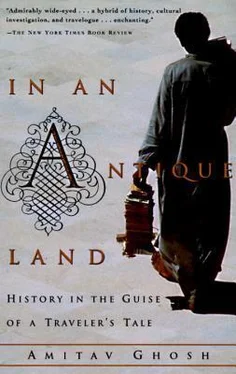
 a
a  îra-s or mats from Berbera (in modern Somaliland), a leather table cloth of a special kind on which chess and other games could be played, an iron frying-pan, a sieve, a large quantity of soap, two Egyptian gowns, and several presents from Madmun, such as sugar, raisins, ‘a quire of white paper’, as well as a piece of coral for Ben Yiju’s son, Surur.
îra-s or mats from Berbera (in modern Somaliland), a leather table cloth of a special kind on which chess and other games could be played, an iron frying-pan, a sieve, a large quantity of soap, two Egyptian gowns, and several presents from Madmun, such as sugar, raisins, ‘a quire of white paper’, as well as a piece of coral for Ben Yiju’s son, Surur. al
al  ânî paper were so fine that ‘no one has its like’. Madmun was not exaggerating: the paper he and his friends sent to Ben Yiju was of so matchless a quality that even today, eight hundred years later, a surprising number of those sheets are still marvellously well-preserved, despite the heat and humidity they have endured in the course of their travels between Egypt and India.
ânî paper were so fine that ‘no one has its like’. Madmun was not exaggerating: the paper he and his friends sent to Ben Yiju was of so matchless a quality that even today, eight hundred years later, a surprising number of those sheets are still marvellously well-preserved, despite the heat and humidity they have endured in the course of their travels between Egypt and India.